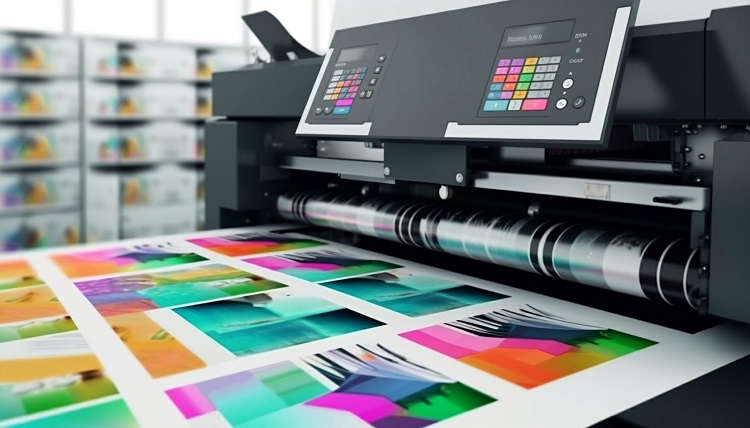In today’s world, businesses are increasingly embracing eco-friendly practices to reduce their environmental footprint. This shift towards sustainability extends to various industries, including the signage and graphics sector. Silicone Edge Graphics (SEG) have become popular due to their versatility and aesthetic appeal, and now, there is a growing demand for eco-friendly printing options within this niche.
Table of Contents
What are Silicone Edge Graphics (SEG)?
Silicone Edge Graphics, often abbreviated as SEG, refer to a type of graphic display where a printed fabric graphic is finished with a thin silicone strip sewn along the edges. These graphics are then inserted into a frame with a groove designed to hold the silicone edge, creating a sleek, frameless appearance. SEG displays are commonly used in retail environments, trade shows, and offices due to their ability to deliver vibrant visuals with a seamless look. To explore a variety of innovative and visually stunning SEG graphics, consider the extensive options available that can transform any business environment.
The Importance of Eco-Friendly Printing
Traditional printing methods often involve chemicals, solvents, and materials that can be harmful to the environment. Eco-friendly printing, on the other hand, focuses on minimizing these environmental impacts by using sustainable materials, reducing waste, and employing energy-efficient processes. For SEG graphics, adopting eco-friendly printing practices not only supports environmental conservation but also aligns with the growing consumer preference for sustainable products.
Eco-Friendly Materials for SEG Printing
- Recycled Fabrics: Utilizing fabrics made from recycled materials is a key aspect of eco-friendly SEG printing. These fabrics are often derived from recycled PET (polyethylene terephthalate) bottles or other post-consumer waste. They offer the dual benefits of reducing landfill waste and minimizing the need for virgin materials.
- Water-Based Inks: Traditional solvent-based inks contain volatile organic compounds (VOCs) that can harm air quality and contribute to pollution. In contrast, water-based inks are formulated with fewer chemicals and VOCs, making them a more environmentally friendly choice for printing SEG graphics. These inks also produce vibrant colors without compromising print quality.
- Biodegradable Substrates: The substrate, or base material, on which SEG graphics are printed can also be eco-friendly. Choosing biodegradable or compostable substrates helps reduce environmental impact at the end of the product’s life cycle. Materials like bamboo-based fabrics or compostable cellulose-based films are examples of sustainable options for SEG printing.
- UV LED Printing Technology: UV LED (Light Emitting Diode) printing technology is gaining popularity for its energy efficiency and reduced environmental footprint. UV LED printers use less energy compared to traditional UV printers and emit less heat, contributing to lower greenhouse gas emissions. Additionally, UV LED inks cure instantly under UV light, eliminating the need for additional drying time and reducing energy consumption.
Sustainable Practices in SEG Printing
Beyond materials and inks, adopting sustainable practices throughout the printing process enhances the eco-friendliness of SEG graphics production:
- Energy Efficiency: Using energy-efficient printing equipment and optimizing production workflows can significantly reduce energy consumption and greenhouse gas emissions.
- Waste Reduction: Implementing practices such as efficient cutting techniques to minimize fabric waste and recycling scraps and unused materials further supports eco-friendly printing.
- Certifications and Standards: Look for printers and materials certified by recognized environmental standards, such as Forest Stewardship Council (FSC) certification for paper products or OEKO-TEX certification for textiles, to ensure sustainable sourcing and production.
Benefits of Eco-Friendly SEG Printing
Choosing eco-friendly printing options for Silicone Edge Graphics offers several advantages:
- Environmental Conservation: Reducing carbon footprint, conserving natural resources, and minimizing waste contribute to overall environmental sustainability.
- Health and Safety: Water-based inks and reduced chemical use create safer and healthier working conditions for printing professionals.
- Customer Appeal: Increasingly, consumers and businesses prefer eco-friendly products and services, enhancing market competitiveness and brand reputation.
Conclusion
Eco-friendly printing options for Silicone Edge Graphics (SEG) are not only a step towards sustainability but also a reflection of responsible business practices. By incorporating recycled materials, water-based inks, and energy-efficient technologies, businesses can create vibrant and durable SEG displays while minimizing environmental impact. Embracing these practices not only meets the growing demand for eco-conscious solutions but also contributes positively to the global effort towards a greener future.
In essence, eco-friendly SEG printing aligns profitability with environmental responsibility, ensuring that businesses thrive while preserving the planet for future generations.

